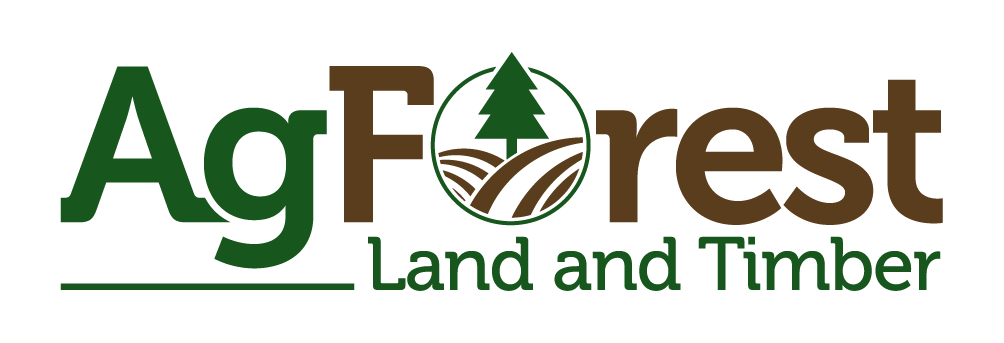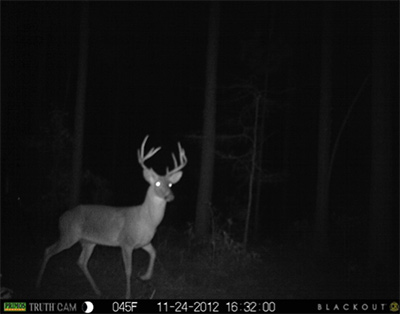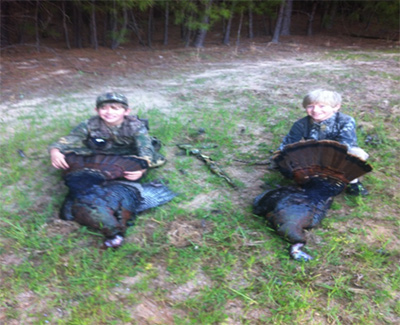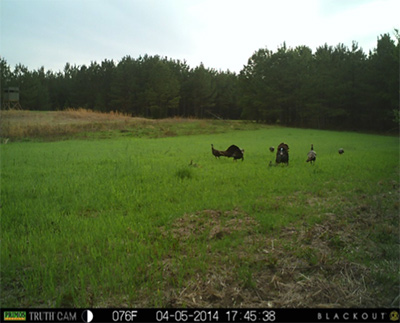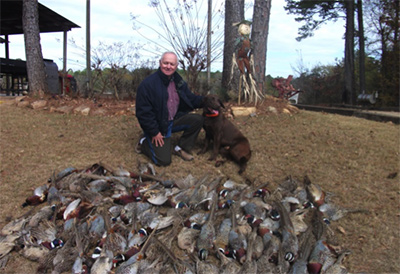Wildlife & Timber Management
Often landowners don’t associate timber harvesting in a positive way with wildlife. What they fail to realize is that they have the power to decide how their timber is to be cut, and that it can be accomplished in a positive way through applying sound forest management with wildlife considerations. Landowners have the best opportunity to increase wildlife populations by wisely using their forest resources. Timber can be used as the monetary tool to create wildlife habitat while paying the mortgage and college education, and keeping up with inflation. Unlike oil and gas exploration, coal mining and commercial development, logging is harvesting a renewable resource. This means that after the resource is used, it will regrow if management is done correctly. To effectively apply forest resouces to their woodland, landowners must first deal with their own perceptions. They must understand that forests are dynamic systems that change. They should not be naive and believe that trees will maintain good health forever. Humans have had an impact on nearly all forestland, whether by forest clearing for agriculture, mining and development, logging, introducing nonnative invasive species or burning.
One of the most productive uses of the forest resource is to create and maintain wildlife habitat. Prior to harvesting timber, a landowner needs to prepare a pre-harvest plan which includes wildlife considerations. All too often, wildlife management is considered as an afterthought, only because most people are enthralled with the revenues they are anticipating to receive from the sale of their timber. One of the most productive uses of the forest resource is to create and maintain wildlife habitat. Prior to harvesting timber, a landowner needs to prepare a pre-harvest plan which includes wildlife considerations.
In a landowner’s pre-harvest plan, an inventory of tree species, forest types, and sizes and ages of trees need to be determined. Using the existing inventory, landowners must decide what species of wildlife they would like to benefit most and the silvicultural system that would most efficiently and economically address the objectives of the timber sale.
For example, if there are high populations of deer on your property, you should plan clear cuts to be at least 10 acres in size so as to overwhelm the deer with available browse. Otherwise your tree seedlings will not survive. The logging slash (logging debris and tree tops) left in the harvest area, which arouses criticism from uninformed spectators, actually protects seedlings from deer browsing, adds nutrients to the soil, and provides shelter beneficial to many other wildlife. Also consider liberalizing the deer hunting opportunities on your property. It is important for landowners to understand that if adequate numbers of preferred seedlings are already established prior to logging, a clear cut should produce a new stand with the landowner’s desired species.
Before attempting a timber harvest, a landowner needs to realize that no silvicultural system is universally good or bad for all wildlife species within a property. We will first prioritize your preferred wildlife species. Then we will review what the property offers in the way of forest types, tree species present and availability of markets to handle certain tree species and tree diameters. To complete your pre-harvest plan, we will determine what possible detrimental effects your actions may have upon your woodland and surrounding properties.
Remember, harvesting your timber is not the removal or eradication of the forest. It is the regeneration or renewal of the forest for both yourself and future generations.
The photos to the right are examples of the fabulous effect harvesting timber on different properties while keeping sound wildlife management at the forefront have produced for our clients.
